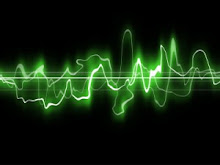I am probably one of the very few people, maybe even the only one, in the whole universe who, until recently, mainly knew of the saxophone as an instrument that sometimes joins symphonic orchestras for twentieth century music. Of course, I knew it was principally a jazz instrument – I had just never really listened to it playing jazz.
So, while I have now heard quite a bit of jazz sax over the past few months, I consider myself pretty lucky that my first really serious piece of saxophone listening has been John Coltrane’s A Love Supreme.
A Love Supreme is an intensely personal work. It is Coltrane’s attempt to express his deeply felt spirituality in music that, for him, he could produce only because God helped him to do it. He wrote it as a hymn to his faith, and in the hope that it would ignite in other people the joy and love that he felt so intensely himself.
Whether you share his faith or not, this music is certainly inspirational, in the very deepest and best sense. It is so intricately integrated, instruments all trading themes and ideas with one another, so that nothing belongs to anyone but, rather to everyone. When you add this to the incredible ways these musicians improvise their ideas, you end up with a work of enormous organic creativity – one where you don’t just feel you are listening to a masterpiece, but that you are actually witnessing its creation.
The spiritual core glows through this music at every point, music that radiates its gratitude, love and joy. The music pulsates with life and lifeblood. Listen to the way the saxophone is pumped to life by the bass’s heartbeat in “Acknowledgement”, with a sprightly melody that jumps from register to register, like it is welcoming everyone and everything into its midst, singing with a voice so human that when Coltrane’s actual voice enters it seems more like another layer of the instrumentation than anything else. Or to the way the sax bursts in at the beginning of “Resolution”, with a melody that bounces with joy and that is then taken up and thrown in the air by McCoy Tyner’s piano, in an amazing feat of improvisation that eventually swaps back to Coltrane’s sax, as if the whole thing is some wonderful story that two people are just bursting to tell you.
“Pursuance” opens with an amazing drum solo from Elvin Jones, once again ushering in Coltrane with a tune that starts simply enough but transforms into more incredible improvisations on the piano and some ecstatic squeals of joy from the extreme heights of the sax. Here Coltrane takes his instrument into every nook and cranny of its capabilities. Whatever sort of spirit you believe in, this is music positively leaping to the heavens with it. The drum solo returns but soon gives way to an incredible solo bass passage from Jimmy Garrison – jaunty, funky rhythms interspersed with chords of sheer beauty. I have never heard the bass played with this much agility.
The final part is “Psalm”, a piece of intense grandeur – capturing, it seems, the real essence of that “love supreme” that gave the suite its title. Here the majestic cries of the sax are underpinned by awesome timpani rolls, massive chords on the piano, and a persistent, undulating bass, the unobtrusive backbone to this incredible piece of music.
I think the thing that astounds me most in this whole suite is the incredible way the musicians work with the music Coltrane gives them, taking themes and phrases and breathing more and more life into them and, just when you think it’s gone as far as it can, it goes further.
The saxophone has been a great addition to the classical orchestra, from its wonderful contribution to Ravel’s orchestration of Mussorgsky’s Picture at an Exhibition, through to the colours it brings to the characterisations in Alban Berg’s Lulu; but surely nowhere has it ever been more alive, more expressive, more musical than here in the hands of John Coltrane in A Love Supreme.
Subscribe to:
Post Comments (Atom)


No comments:
Post a Comment